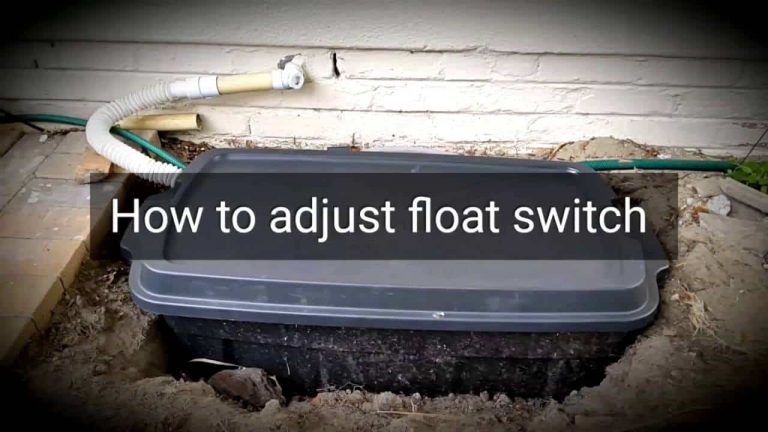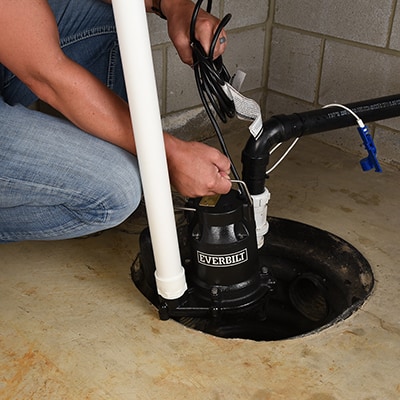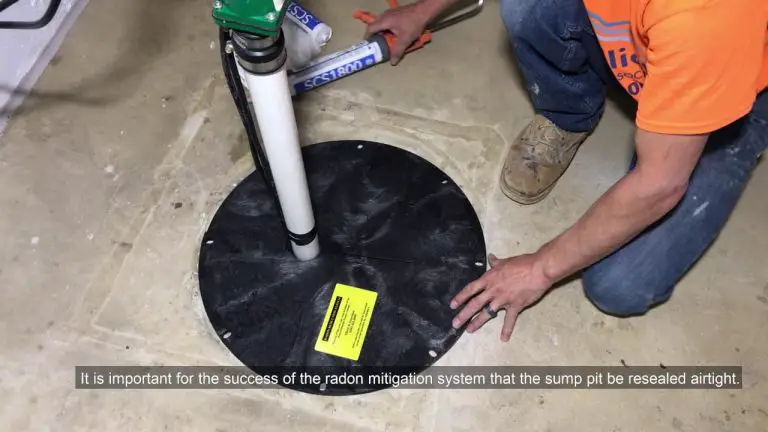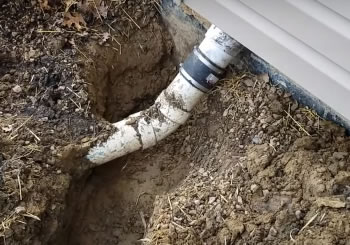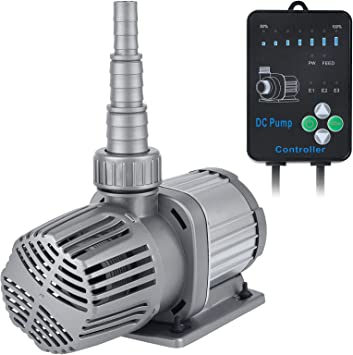What Can I Do to Make My Sump Pump Work Better
If your home is prone to flooding, a sump pump is a vital piece of equipment. These pumps are installed in a pit or low point in your basement and remove water that has accumulated there, before it can cause any damage.
But even the best sump pump can have problems from time to time. If you’re having issues with yours, here are some tips on what you can do to make it work better.
If your sump pump isn’t working as well as it used to, there are a few things you can do to try and improve its performance. First, check to make sure the float switch is free of debris and able to move up and down freely.
This switch activates the pump when water levels rise, so if it’s stuck in one position the pump won’t turn on. You should also check the discharge pipe to ensure it isn’t blocked or kinked, as this can prevent water from flowing out of the sump pit and cause the pump to work harder than necessary.
Finally, inspect the impeller (the part of the pump that moves water) to see if it’s damaged or clogged with debris. If so, you’ll need to replace it. With a little troubleshooting, you should be able to get your sump pump working better in no time!
6 Things Sump Pump Owners NEED to Know
Sump Pump Failure What to Do
If your sump pump fails, don’t panic! There are some things you can do to minimize the damage. First, turn off your power to the sump pump.
This will prevent any further damage to the pump. Next, remove any standing water from around the sump pit.
Use a wet/dry vacuum or a mop and bucket to remove as much water as possible. Once the area is dry, inspect the sump pump for damage.
If it appears to be damaged beyond repair, you’ll need to replace it. However, if it looks like it just needs a little TLC, you can try cleaning and troubleshooting it yourself.
If you have a backup sump pump, now is the time to use it! Install it according to the manufacturer’s instructions and turn it on. Finally, call a professional plumber to help you assess the situation and make sure everything is up and running again properly.
Sump Pump Clogged With Sediment
If your sump pump is clogged with sediment, it’s important to take care of the problem as soon as possible. If you don’t, your pump could fail and cause serious water damage to your home.
There are a few things you can do to clean out your sump pump: – Use a garden hose to flush out the sediment. – Use a wet/dry vacuum to suck up the sediment.
– Remove the Sediment by hand (this can be messy!) Once you’ve removed the sediment, it’s important to prevent it from coming back. You can do this by: – Checking the discharge pipe regularly for blockages.
– Installing a screen or filter over the intake of your sump pit. – Adding a layer of gravel around the outside of your sump pit. This will help keep sediment from getting into the pit in the first place.
Should There Be Water in My Sump Pump Pit
If your sump pump pit is full of water, it’s likely because the pump isn’t working properly. If the pit is full of water, the pump will have to work harder to remove the water, which can shorten its lifespan.
Additionally, a wet pit can lead to mold and mildew growth, which can be dangerous for your health. There are a few things you can do to fix this problem.
First, check to see if the pump is turned on. It’s possible that someone accidentally turned it off and forgot to turn it back on.
If the pump is on but not working properly, you may need to clean or replace the impeller. The impeller is what propels the water out of the pit and into the drainpipe.
A clogged or damaged impeller will prevent the water from being pumped out properly. If you’re not sure how to clean or replace the impeller, you should call a plumber or sump pump repair service. They’ll be able to help you get your sump pump running properly again in no time!
Can You Shower If Your Sump Pump is Not Working
If your sump pump is not working, you should not shower. This is because the sump pump is responsible for removing water from your home, and if it is not working, the water will build up and could flood your home. In addition, the water that does build up could be contaminated and pose a health risk if you were to shower in it.
Sump Pump Maintenance
If you have a sump pump in your home, it’s important to keep it well-maintained. A sump pump helps to prevent flooding by pumping water out of the basement or crawl space.
When it’s working properly, you shouldn’t even know it’s there. But when something goes wrong, it can cause major problems.
Here are some tips for maintaining your sump pump: 1. Check the power source regularly.
Make sure the pump is plugged in and that the batteries are fresh. If you have a backup generator, test it periodically to make sure it’s working properly.
2. Inspect the intake screen regularly and clean away any debris that has collected there.
This will help keep the pump from getting clogged and improve its efficiency. 3.
Test the pump regularly by pouring a bucket of water into the pit and making sure that the pump kicks on and starts draining the water out. If it doesn’t, there may be a problem with the float switch or another component and you’ll need to call a professional for repairs.
4. Keep an eye on the discharge pipe to make sure water is flowing freely through it without any leaks or blockages.
Sump Pump Float Switch
A sump pump float switch is a device that is used to automatically turn a sump pump on and off. The float switch is usually installed in the sump pit, and it consists of a float (usually made of Styrofoam or plastic) that sits on top of the water.
When the water level rises to a certain point, the float activates the switch, which turns on the pump. The pump then removes the water from the pit, and when the water level drops below a certain point, the float switch deactivates the pump.
There are two main types of sump pump float switches: mechanical and electronic. Mechanical float switches are the most common type, and they work by using a simple lever system to activate the switch.
Electronic float switches are less common, but they offer some advantages over mechanical switches. For one thing, they’re more reliable – since there’s no moving parts, there’s less chance of something going wrong with them.
Additionally, electronic float switches can be programmed to turn the pump on and off at specific water levels, which gives you more control over how much water is removed from your pit (and can help prevent your pumps from running dry). If you’re thinking about installing a sump pump in your home or business, chances are good that you’ll need to install a float switch as well. These devices are essential for ensuring that your pumps run properly and efficiently – so make sure to do your research before making your purchase!
Sump Pump Troubleshooting
If you have a sump pump, it’s important to know how to troubleshoot it in case of problems. Fortunately, sump pump troubleshooting is relatively easy.
Here are some common issues and how to solve them: 1. The most common problem is that the pump doesn’t turn on when it should.
This is usually because the float switch isn’t working properly. To fix this, simply clean or replace the float switch.
2. Another common issue is that the pump runs continuously and doesn’t shut off when it should.
This can be caused by a variety of things, including a clogged impeller or a faulty check valve. To fix this, simply clean or replace the affected parts.
3. If your pump isn’t moving enough water, it could be due to a clogged intake screen or impeller.
Cleaning or replacing these parts should solve the problem. 4. Finally, if your pump is making strange noises, it could be due to loose bolts or an unbalanced load.
Best Sump Pump
If you live in an area that is prone to flooding or has a high water table, you know how important it is to have a sump pump. A sump pump helps to keep your basement dry by pumping water out of the sump pit and away from your home.
But with so many different types and brands of sump pumps on the market, how do you choose the best one for your needs? There are three main types of sump pumps: submersible, pedestal, and battery-operated. Submersible pumps are installed inside the sump pit and are usually the most reliable type of pump.
Pedestal pumps are mounted outside of the pit and can be less reliable, but they are easier to service if there is a problem. Battery-operated pumps are a good choice if you want a backup system in case of a power outage.
When choosing a sump pump, it’s important to consider the size of your basement and the amount of water that needs to be pumped out. You’ll also want to think about how often the pump will need to run.
If you have a small basement or if your water table isn’t very high, you might not need a very powerful pump. However, if you have a large basement or live in an area with frequent flooding, you’ll need a more powerful pump that can handle more water.
Once you’ve decided on the type and size of pump you need, it’s time to start shopping around! Check out online reviews from other homeowners before making your final decision. And make sure to buy from a reputable dealer so that you can get any warranty or service issues taken care of quickly if necessary.

Credit: www.therooterworks.com
Why is My Sump Pump Draining Slow?
One of the most common questions we get here at Sump Pumps Direct is, “Why is my sump pump draining slow?” There can be a few different reasons for this issue. Let’s take a look at a few of the most common causes: 1.
The most common reason for a sump pump to drain slow is because the discharge line is clogged. This can happen over time as debris and sediment build up in the line.
The best way to clean out a clogged discharge line is to use a plunger or plumber’s snake. Simply insert either one of these tools into the discharge line and push/twist until you feel resistance.
This will usually clear out any blockages and allow your sump pump to drain properly. 2.
Another possible reason for a sump pump to drain slow is because there is too much water being pumped into it. If your sump pit is constantly filled with water, then your pump will have to work overtime to keep up.
This can cause it to wear out prematurely and also cause it to drain slow. The best way to fix this problem is by installing an overflow valve that will release excess water before it has a chance to enter your sump pit.
3. Finally, another possible reason for a sump pump to drain slow could be because the impeller (the part that actually pumps the water) is damaged or worn out.
How Do I Increase the Flow Rate in My Sump Pump?
If your sump pump isn’t working as efficiently as it should be, there are a few things you can do to try and increase the flow rate. First, check to see if the intake screen on the bottom of the unit is clogged with debris.
If it is, clean it off and see if that makes a difference. If not, the next step would be to check the discharge hose to see if there is any blockage.
If so, clear it and try again. Finally, if neither of those two options worked, you may need to replace your sump pump with a more powerful one.
What is the Most Common Reason for Sump Pump Failure?
If you have a sump pump in your basement, it’s important to know the most common reason for sump pump failure: power outages. If your pump runs on electricity, a power outage will cause it to stop working.
This can lead to flooding in your basement if the water level in the sump pit rises too high. There are a few things you can do to protect your sump pump during a power outage: – Invest in a backup power source for your pump, such as a battery backup or generator.
– If possible, disconnect your pump from the electrical outlet before the power goes out. This will prevent any damage to the pump from surges when the power comes back on. – Keep an eye on the water level in the sump pit during a power outage and if it starts to rise, manually remove water from the pit with a bucket or other container.
How Do I Stop My Sump Pump from Clogging?
If your sump pump is clogging, there are a few things you can do to fix the problem. First, check the intake screen for debris and clean it if necessary.
Second, make sure the discharge pipe is not blocked and that water can flow freely through it. Third, inspect the impeller for damage or debris and clean or replace it as needed. Finally, if all else fails, you may need to replace the entire sump pump.
Conclusion
If your sump pump isn’t working as well as it used to, there are a few things you can do to try and improve its performance. First, check to see if the inlet screen is clogged with debris.
If it is, clean it off and see if that makes a difference. You might also need to clean out the pit itself – remove any mud or sediment that has built up over time.
Finally, make sure the discharge pipe isn’t blocked or kinked – this could be preventing water from flowing through properly. If none of these things seem to help, it’s possible that your sump pump needs to be replaced.

